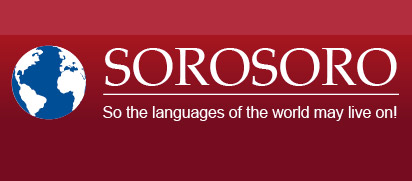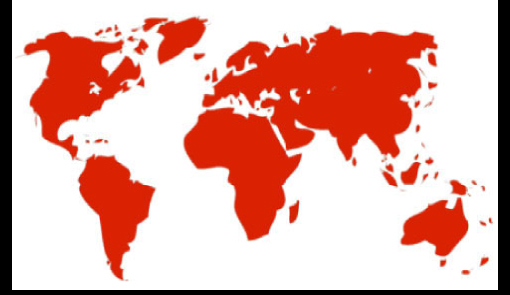Print  |
|

Kaingáng
Data collected by UNICEF
Data on the Kaingáng language
Alternative names: Kanhgág, Caingangue, Coroado, Taven, Kadyrukré, Guayaná, Botocudo
Most alternative names are now obsolete. Kaingáng, spelled in various ways, is the name which the speakers use for the language.
Main dialects: According to Ursula Wiesemann of SIL, there are currently five main dialects of kaingáng:
The kaingáng spoken in São Paulo, between the Tietê and Paranapanema rivers; the kaingáng of Paraná between the Paranapanema and Iguaçu rivers; the central dialect, between the Iguaçu and Uruguay rivers; the south-west dialect, between areas south of the river Uruguay and west of the Passo Fundo river; and the south-east dialect, between the areas south of the river Uruguay and east of the Passo Fundo river.
Classification: Kaingáng is a Jê language (southern Jê branch), of the Macro-Jê family.
Information sourced from Aryon Rodrigues (1999)
Some sources from the 1960s considered Xokléng to be a dialect of Kaingáng. Current usage differentiates the two languages.
Geographical area: The Brazilian states of Paraná, Rio Grande do Sul, Santa Catarina and São Paulo.
The population is distributed across 30 or so “indigenous territories”, but there are also speakers on the fringes of these areas. Kaingáng’s presence is also attested in urban areas, such as São Paulo.
Number of speakers:
– Ethnic population: According to the ISA’s (Instituto Socioambiental) 2006 census, the total population has grown to 28 000 people. However, the 2009 FUNASA census gives the figure of 33 064 speakers. According to PIB (Povos Indígenas no Brasil), these figures need to be seen as a “rough estimate” rather than a comprehensive census. Kaingáng speakers are most likely the biggest population of Jê speakers.
– Number of speakers: It is difficult to obtain exact figures on the number of speakers of Kaingáng. The Linguamón website estimates that there are 18 000 speakers, whereas Unesco gives a figure of 18 500 speakers.
Official status of Kaingáng: Kaingáng has no official status.
According to Linguamón: “Portuguese is the only official language of Brazil. Current linguistic legislation for other languages pertains only to the education sector, and in particular bilingual and intercultural primary school teaching (exclusively in indigenous communities). In reality, there are, however, very few qualified bilingual teachers”.
Teaching:
We are beginning to see some bilingual teaching in Kaingáng/Portuguese, but it is restricted to only the first year of school. Linguamón says that schools are not really providing “true” bilingual education as they are “favouring the use of Portuguese”.
Vitality and Transmission:
Kaingáng is an endangered language according to Unesco criteria.
In reality, the situation differs depending on the area and the community: in areas like Ivaí and Faxinal, there are still a few people who remain monolingual in their native language, while in other regions, like some villages of São Paulo, Kaingáng is no longer spoken at all. It would seem that the vast majority of speakers are bilingual in Portuguese and Kaingáng. A feeling that the language is a symbol of the speakers’ identity remains. Kaingáng is one of the most studied and documented Jê languages.
Ethnographic and sociological observations
Like other Amazonian cultures, particularly those using jê languages, Kaingáng society is traditionally dualist. That is, society is divided into two moieties, two distinct and exclusive groups, with each individual belonging to one or the other group.
The myth of the origins of the Kaingáng recounts the tale of two founding brothers, Kamé and Kairu. After a huge flood, the brothers climbed out of the top of the Crinjijimbés mountain and then proceeded to create and name the animals and plants. This division between Kamé and Kairu is a concept which applies to people, the structure of society and the surrounding environment: “the sun is Kamé, while the moon is Kairu; the Pine is Kamé, while the Cedar is Kairu; lizards are Kamé while monkeys are Kairu, etc”. In the Kaingáng creation myth, Kamé represents perfection, permanence and achievement, and Kairu signifies imperfection, impulsivity and lack of achievement. This dualism is common in Amerindian cultures: Levi-Strauss even made it the subject of one of his books, The Story of Lynx.
As mentioned above, each individual belongs to one of the two groups in Kaingáng society. Marriages are exogamous between the two groups: a kamé man must marry a kairu woman and vice-versa. Kaingáng society is matrilocal, but patrilineal. Therefore, a young married couple will live with the wife’s family, but whether they will belong to one or the other group is determined by the father, and the name given to a child is based on the group to which it belongs.
Although a more sedentary lifestyle, Western social models and economic difficulties have affected Kaingáng society today with regard to social organisation, religion and ritual, traces of traditional social organisation remain in Kaingáng villages and territories.
Historical observations
Like other populations living in the forests close to the Atlantic Coast (the Guaranis-Kiowá or Mbyá, for example) the Kaingáng had early contact with Portuguese colonies in the 16th century.
The urban and agricultural developments inherited from “Western” colonial society have gradually reduced the native territories of the Kaingáng to small “reserves”. In these reserves, the environment has been degraded and the people have been subjected to forced settlement and have had to abandon their traditional way of life including hunting and fishing practices.
Today, the Kaingáng survive by working on agricultural plots administered by the FUNAI (the Brazilian National Indian Foundation) either on family or artisanal farms. Some work as agricultural labourers on “Western” farms that have encroached on their lands.
The Kaingáng people are in a constant battle for the restitution of the lands which were taken from them. The lands on which they now live are too small to guarantee the survival of the whole population.
For more information on the Kaingáng, check out the invaluable Povos Indígenas no Brasil site.
Also, see the Portalkaingang site (in Portuguese).
Sources
De Castro Alves, Flávia (2010). Brasil no Amazónico. In « Atlas sociolingüístico de pueblos indígenas en América Latina » (Sociolinguistic atlas of the indigenous peoples of Latin America – In Spanish), UNICEF. Volume 1, pp 265-280.
Fabre, Alain. 2005. Diccionario etnolingüístico y guía bibliográfica de los pueblos indígenas sudamericanos. (Ethnolinguistic dictionary and bibliographic guide on the indigenous peoples of South America) Online version (in Spanish) [20/04/2011]
Web sources
Data collected by UNICEF on the kaingáng (in Spanish)
Information on the Kaingáng on the Povos Indígenas no Brasil site
Information on kaingáng on the Linguamón site
Additional bibliography
CIMI REGIONAL SUL. 1984. Toldo Chimbangue : história e luta Kaingang em Santa Catarina. Xanxerê : Cimi (in Portuguese)
D’ANGELIS, Wilmar da Rocha. 2002. Kaingang : questões de língua e identidade. Rev. Liames, Campinas : Unicamp, n. 2, p. 105-28 (in Portuguese)
Bastos, Jacqueline Narciso & Márcia Regina Pereira Sagaz 2005. A identidade étnica dos Índios urbanos na Gde.Florianópolis (in Portuguese)
Lévi-Strauss, Claude. 1991. Histoire de lynx. Plon, Paris (in French ; published in English as “The Story of Lynx”)
Rodrigues, Ayron D. (1999). « Macro-Jê » In R.M.W. Dixon and Alexandra Y. Aikhenvald, (eds) The Amazonian languages, Cambridge University Press.
See Atlas sociolingüístico de pueblos indígenas en América Latina (Sociolinguistic Atlas of the Indigenous Peoples of Latin America – in Spanish) and Fabre (2005) for a more complete bibliography.
Please do not hesitate to contact us should you have more information on this language: contact@sorosoro.org








